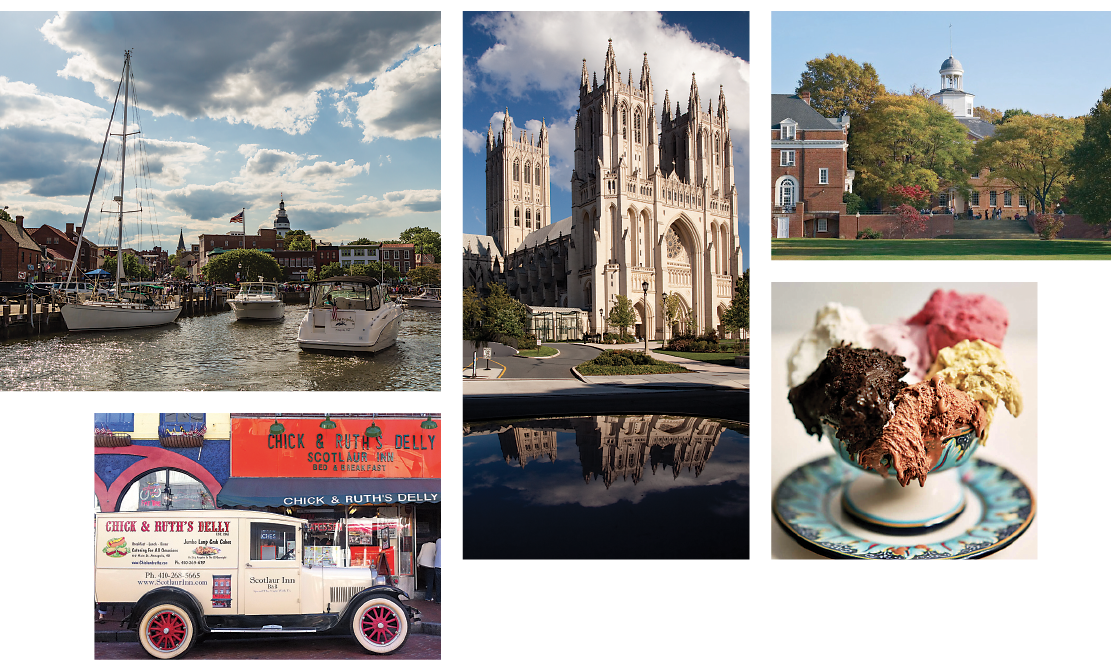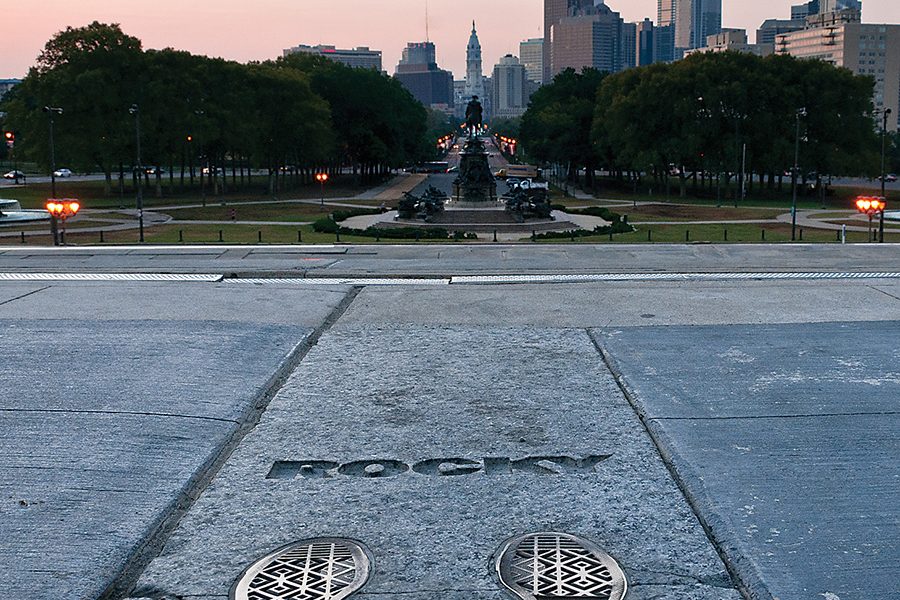Travel & Outdoors
Runner's World
Hit the road and see the sights with this new travel trend.
It’s often said that the best way to explore any new city is on foot. You can test that hypothesis—and get in your daily workout—by partaking in the new trend of running tours. Faster than walking tours and more nimble than bus tours, these fleet-footed expeditions have sprouted up around the world in the past decade.
In the U.S. alone, there are now running tours at least 16 cities stretching from New York City to Honolulu—and the trend shows no signs of abating. “I had three guides when I started, and now there are eight,” says Annie Gianola, who used to manage the Philadelphia program before becoming the executive director of City Running Tours, a national company that oversees numerous markets (cityrunningtours.com). Gianola, who lives in Philly, still leads local tours on occasion. “I get pretty jazzed up every time I do a tour and people say, ‘I never knew running was so great,’ or ‘I didn’t know Philly had so much history,’ ” she says.
Each city offers a choice of group or personalized runs. Tours usually have some sort of theme, such as architecture or a particular slice of history. The runs generally range between 3 and 7 miles, and while there’s no fitness requirement, participants should feel comfortable running the anticipated distance in moderately hilly conditions. But don’t worry: There are always stops for photos, water, and
history lessons along the way.
We laced up our kicks for trips around the three nearest cities offering jogging jaunts and discovered there’s plenty to see while you pound the pavement.
→ ANNAPOLIS
The Warm-up: Annapolis Running Tours was started in 2014 by outdoorsy empty nesters Charles Goldblum and Beth Robbins, who also own the rights to the Baltimore territory. (They haven’t created any Charm City tours yet, but may soon.) Along with two other guides, the couple leads three themed tours of the state’s capital—Colonial heritage, maritime heritage (both approximately 3 miles), and a tour of St. John’s College and the Naval Academy (6 miles).
In Your Sights: We opted for the Colonial Heritage Tour, which begins at Market House, the collection of food vendors across from City Dock. The route then travels past the magnificent yachts and boats that bob in the row of slips known as Ego Alley before looping through the downtown, taking in many a historic manse along the way. (A particular highlight is a peek over a back wall to the formal terraced gardens of the William Paca House, the home of the former Maryland governor and Declaration of Independence signee.) The tour ends back at City Dock, by the sculpture of Alex Haley, the author of Roots, a sobering reminder that the Colonial quaintness we enjoy today was subsidized by the Atlantic slave trade. The Maritime Heritage Run crosses Spa Creek to Eastport, the hip Annapolis nabe that retains a strong seafaring streak even as it has gentrified over the past few decades. Stops include the Annapolis Maritime Museum located in the former McNasby Oyster Company building, the last remaining oyster-packing plant in Annapolis. The 6-mile trip through the colleges is just that—an up-close look at two of the nation’s most storied temples of higher education: St. John’s College, which traces its roots to 1696 and teaches a curriculum based on the great books of Western Civilization, and The U.S. Naval Academy, which will mark its 170th birthday on October 10.
The hip Annapolis nabe of Eastport retains a strong seafaring streak.
Fun Fact: A debate club met nightly in the 1760s in a building that still stands on Duke of Gloucester Street. The club’s members, who included William Paca and future Supreme Court Justice Samuel Chase, discussed issues of the day, such as aristocracy versus democracy and the populace’s right to dethrone a king—like a ye olde version of Hardball.
Cost: $30-40. Participants get a coupon for 10 percent off at the Annapolis Running Shop.
Refuel: Participants are given water and snacks before being sent out into the Annapolis day. But if you’re craving something more substantial, stop at the most famous sandwich shop in Annapolis, Chick & Ruth’s Delly (165 Main St., 410-269-6737, chickandruths.com), which is known for its oversized sandwiches and platters named for local politicians.
→ WASHINGTON, D.C.
The Warm-up: Washington, D.C. Running Tours offers seven different routes. A 6-mile White House and monument run is popular, as is a 4.4-mile beer tour that ends with refreshments at the Right Proper Brewing Company. Other routes explore Southwest D.C.’s waterfront, Chinatown, the U Street Corridor, and the Eastern Market/Capitol Hill neighborhoods.
In Your Sights: We chose the 6-mile Embassy Row and Foggy Bottom tour, which starts and ends at the fountain in Dupont Circle. The run quickly leaves the green of the park and begins an exploration of the magnificent buildings of Embassy Row. Runners can see how each country defines itself through architecture and statuary. The South African Embassy, for example, features a statue of Nelson Mandela out front, while the Russian Embassy looms over its neighbors, making one wonder what kind of spycraft goes on inside.

Early in the run, the Kahlil Gibran Centennial Foundation memorial is another highlight. Situated in a shady park that feels like a hidden jewel amid the concrete and brick of Washington, the garden was created in 1991 to honor the poet best known for The Prophet. The run explores the leafy, uneven streets of Georgetown, passing boutiques and restaurants, including Martin’s Tavern on Wisconsin Avenue, where Jack supposedly proposed to Jackie in 1953, and where every President since Harry S. Truman has dined. Runners also see the thoroughly urban George Washington University campus, the National Cathedral, and the U.S. Naval Observatory, where the Vice President lives.
Fun Fact: Nobody is quite sure which George gives Georgetown, established in 1751, its name, but it’s not George Washington. It could be King George II, who was ruling Britain at the time, or it could be original Georgetown landowners George Gordon and George Beal.
Cost: $30-45.
Refuel: Near Dupont Circle, Scion Restaurant (2100 P St., N.W., 202-833-8899, scionrestaurant.com) offers a delicious brunch. Entrees come with all-you-can-eat fruit, plus there’s the opportunity to sit outside in nice weather.
→ PHILADELPHIA
The Warm-up: Philadelphia offers six tours. The 5.5-mile Historic Philadelphia tour is an urban run that traverses some of the city’s oldest streets and parks. For more spirited sprees, there are two different beer runs, plus a 6-mile circuit through South Philly and the famed Italian Market, and a 3-miler through Old City that takes in the Liberty Bell. But only one run—the 6-mile Art Museum/Rocky Steps Run—allows you to follow in Stallone’s Chuck Taylors and ascend the steps at the Philadelphia Museum of Art. Unsurprisingly, that run is most popular with out-of-towners.
In Your Sights: We opted for the Historic Philadelphia tour, which starts at athletics store Philadelphia Runner (1601 Sansom St., 215-972-8333) in the heart of the city. The run takes participants past expected sites such as Benjamin Franklin’s grave, Independence Hall (where both the Declaration of Independence and the Constitution were signed), the Betsy Ross house, and the Liberty Bell Center. But it also spotlights the city’s rich reserves of public art, including an astonishing statue depicting Irish people escaping the Great Famine and another of Benjamin Franklin, made entirely of melted-down pennies and keys—a nod to his famous aphorism “a penny saved is a penny earned” and his experiments with kites, keys, and lightning. Not all of the art is so serious, however: The run goes past a bar called Dirty Franks, which is said to have opened in the waning days of Prohibition and features an exterior mural of famous Franks, including Sinatra, Zappa, and Perdue.
Fun Fact: Edmund Bacon, the city’s planner from 1949 to 1970, was known as the father of modern Philadelphia and was on the cover of Time magazine in 1964 under the banner “Urban Renewal: Remaking the American City.” He’s also the father of an even more famous son, Kevin Bacon.
Cost: $35-40. Participants get 10 percent off at Philadelphia Runner.
Refuel: Sampan (124 S. 13th St., 215-732-3501, sampanphilly.com), a chic restaurant offering small-plate Asian fusion fare, is a delicious option with outdoor seating and great people-watching. But don’t go right after your run—wash off and spiff up first. For dessert, try one of the Capogiro Gelato Artisans locations for freshly made gelato (several locations, including 117 S. 20th St., 215-636-9250, capogirogelato.com).
